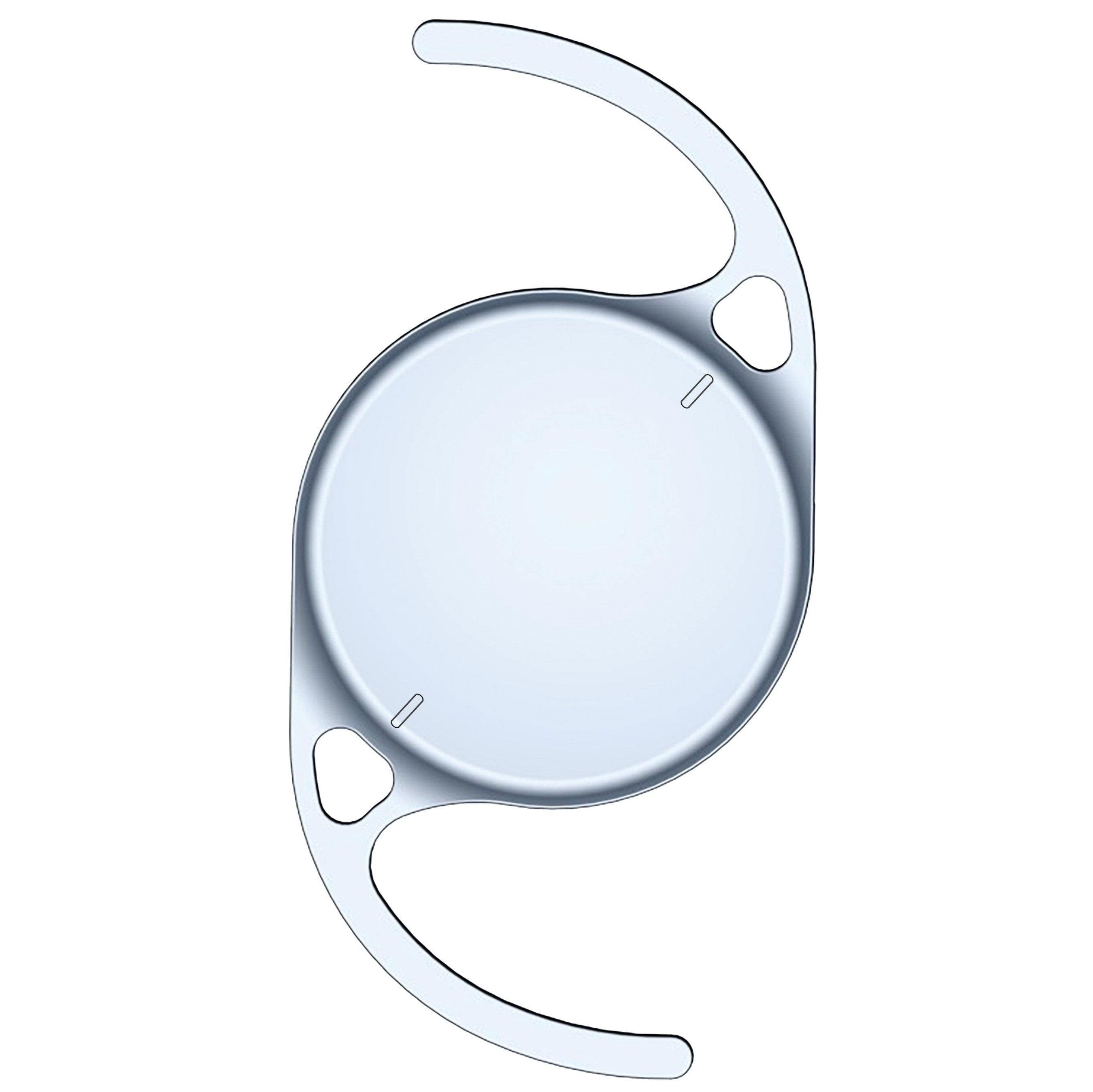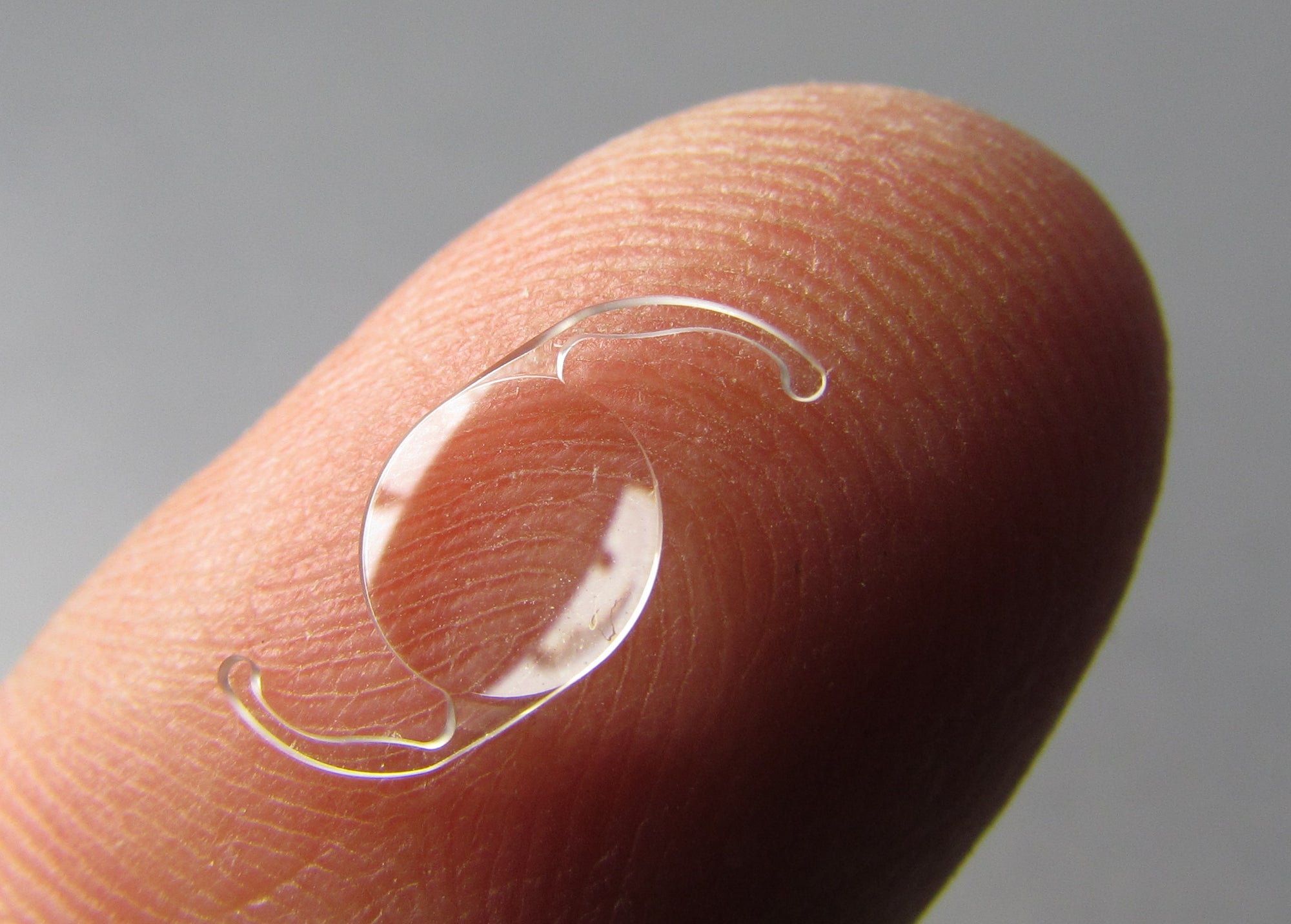Patients with astigmatism who have undergone cataract surgery often lament their choice to have a standard lens implanted which does not fully correct their vision.
What is Astigmatism?

Astigmatism may cause blurring of both distance and near vision[/caption]
Astigmatism, also known as oval optics, is usually caused by the clear corneal window in the front of the eye not being perfectly round. To see clearly, patients are fitted with either eyeglasses or contact lenses that are shaped opposite the cornea’s oval direction.
You can see for yourself whether your eyeglasses have an astigmatism correction by holding the lens about a foot away from your eye, and rotating it vertically and horizontally while looking at an object in the distance. Eyeglasses with an astigmatism correction will cause the object to change shape – in one direction being tall and skinny, while the other direction it is shorter and fatter.
If you have an eyeglass prescription, the amount of astigmatism is the middle number in the three-number sequence, such as:
+0.75 -1.75 x 85
Why is Astigmatism Important?
If astigmatism measures 1 diopter or more, vision will be blurred for both distance and near distances when eyeglasses aren’t worn. The greater the astigmatism, the greater the blur.
Patients with astigmatism undergoing cataract surgery opt for replacement lenses – known as lens implants – which can either leave their astigmatism unchanged or correct their astigmatism from the inside of the eye. Astigmatic lens implants, also known as toric lens implants, result in better distance vision without glasses. And because they are placed at the eye’s optical center, they don’t distort vision the way that astigmatic eyeglasses do.
What’s the Catch?

Knowing that toric lens implants markedly improve vision in patients with astigmatism, you would think that all eligible patients would choose this technology. But in our practice, only half of patients do so. Why? Because while cataract surgery is fully covered by Medicare and all other insurance companies, premium lens implants such as toric lenses are an out-of-pocket expense that is the patient’s responsibility.
Only after patients learn this do they sometimes choose the standard lens technology, even though they know that their vision will not be as clear and that they will be reliant on eyeglasses for both distance and near vision.
“I’ve worn glasses all my life,” is a most frequent answer given to doctors by patients who choose standard lens technology.
Why the Lament?
After surgery, however, patients who chose standard lens technology are frequently disappointed with their vision. Yes, they can often see 20/20 or better with an eyeglass prescription. But they yearn for better vision without their glasses.
“I wish I would have known,” is a frequent answer given to eye surgeons by astigmatic patients who have chosen standard lens implants, after their surgery is completed.
Recommendation:
The vision that you have after cataract surgery is often the vision that you will have for the rest of your life. Most doctors will not pressure you to have an expensive lens implant that you do not need and are sensitive to the fact that your individual finances might be too tight to afford the better technology.
Treat your vision as the most important sense that you will have as you age. It impacts your ability to drive, to read, to enjoy the beauty in your environment, and most importantly, to be independent. Don’t forget to weigh the years of costs of buying astigmatic distance eyeglasses or bifocals if you choose to have a standard lens implant.
Summary:
Toric lens implants typically reduce astigmatic correction from 75-100% following cataract surgery, improving vision.














